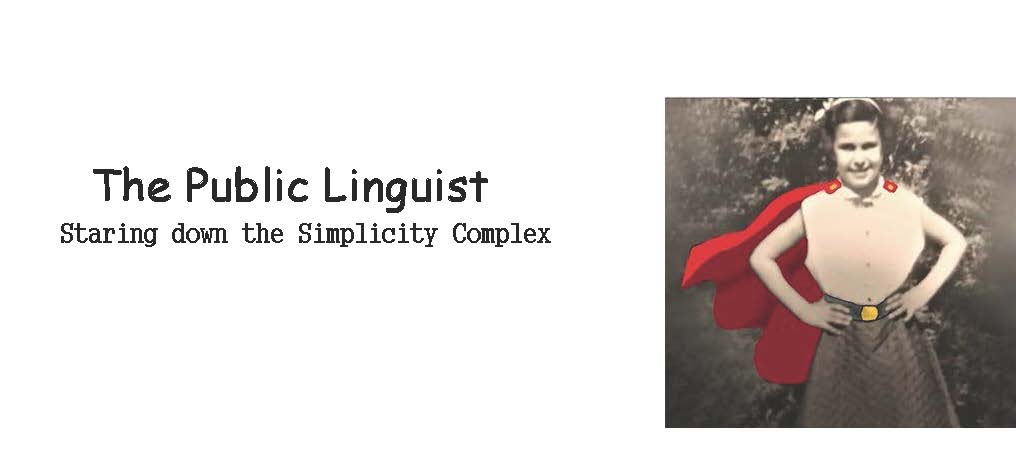Yes, I sat riveted listening to the testimony Bret Kavanagh
and Christine Blasey Ford gave to the Senate Judiciary Committee on Sept 27th. The post-play analysis ranged from calling
both emotional, Blasey Ford “credible” “compelling”, and Kavanagh “unrestrained” and “combative".
OK. I confess. I’m a linguist. And I study speech acts – what people
actually “do” when they speak. Simple
speech acts are things like. “I do” when I take wedding vows; “ I promise to do it.” So when you say
“promise” you’re actually making the promise.
“I accept your apology.” Saying
is doing.
There are many, many ways we “do” something by speaking. If I am sitting in a cold room and someone is
sitting by an open window, I can say to that person, “Gee, it’s cold in
here.” My utterance is really an
indirect request for the person to close the window. ( See Austin, How to Do
Things With Words (1955) ; Searle Speech Acts (1969))
Without getting us all tripping over every daily
conversation we have, in critical
situations, like this Senate hearing, what we say and what that does can make
the difference between winning and losing.
Let’s get one thing straight. I will always be
thankful and awed by Blasey Ford's bravery and riveted by her truth.
I will always be appalled by the Republicans, their
egregious use of power and their ugly ideologies.
But, I’ve been replaying what Blasey Ford and Kavanaugh said in
the Senate hearing with an ear to what their remarks really did. What they did when they spoke.
Here are the two
speakers:
Bret Kavanagh, the accused - known to the committee as a
prestigious jurist. We could expect the accused to be defensive and ready to
refute charges. Blasey Ford’s remarks
lasted about 18 minutes.
Christine Blasey Ford, the unknown person accusing the
powerful jurist, speaking in the era of the MeToo movement. What could we
expect from her?
Kavanaugh’s remarks went on for 47 minutes.
Length of talk is something we always look at. And more can be analyzed about that metric.
But I wanted to unpack what each said. A
line by line analysis would likely bore you all. So, what I’ve done (below)is a speech act
analysis of the early opening remarks of both Kavanaugh and Blasey Ford.
I tried to move through each of their opening remarks using
the topic sentence or utterance from each new paragraph. Sometimes the topic sentence, the sentence
that makes the point of the paragraph chunk, comes in the third or the fourth
sentence. In those cases I used this
later sentence.
I’ve taken the key topic sentences uttered by each person
and looked at the structure and function of their speech. I wanted to uncover what they said, and what
saying that then actually did.
For those who are following along closely in the published
transcripts you’ll see that I’ve condensed some sections by summarizing what
certain paragraphs were about. I do this because writing about every utterance
would yield a very long essay, more suited for a linguistics journal than this
blog.
In my next blog entry I’ll finish analyzing the remainder of the opening remarks and then I'd like to re-image Blasey Ford’s opening statement. Knowing full well
that she told her story as she needed to tell it. But a linguist is always
working and reworking language – that most powerful of human tools.






No comments:
Post a Comment